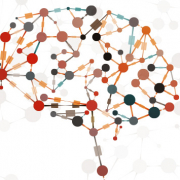Earlobe genetics pierces the monogenic myth
Your earlobe shape was thought to be controlled by a single gene – until genome sequencing revealed otherwise. What other misconceptions will be uncovered?
In last week’s piece, Professor Frances Flinter, consultant in clinical genetics at Guy’s & St Thomas’ NHS Foundation Trust and chair of the NHS England’s Medical Genetics Clinical Reference Group, said: “Mendelian inheritance is still fundamental to the study of many rare diseases, but we will have to stop over-simplifying our explanations – and our genetic tests.”
Mendelian inheritance will always have a place within medicine – the ABO blood antigen classification is an example that influences clinical practice daily, and diseases such as sickle cell and cystic fibrosis are caused by mutations in known single genes.
While it is true that some genes map neatly onto observable characteristics, the majority of observable traits are governed by large numbers of genes interacting in complex systems. As Professor Flinter pointed out, often a mutation in one gene associated with a medical condition would be identified, and research would stop. But the single mutation could seldom explain the variable presentation in symptoms or severity between patients.
All ears
This was highlighted in a recent article that looked at the genetics of earlobe attachment, as a model to see how many associated genes could be identified in different size data sets.
Earlobe attachment was often used as a textbook example of Mendelian genetics, leading to a widespread belief that it is governed by a single gene.
Scientists at the University of Pittsburgh collected data on lobe shape from 10,000 study participants who had their genomes sequenced. They also used a dataset of 65,000 records obtained through personal genetic testing company 23andMe.
Analysis of the 10,000 records yielded six genes significantly linked to earlobe shape, disproving the traditional view of lobe attachment inheritance. The larger dataset found the same six, and also a further 43 genes that all appear to have an effect on lobe shape.
‘Sometimes the genetics of a fairly simple trait are actually quite complex,’ said lead author Dr John Shaffer.
Applications in healthcare
The study did not ascertain the functions of the 49 genes. Earlobe attachment may not be medically relevant in most patients, although researchers of diseases such as Mowat-Wilson Syndrome that have characteristic facial and ear morphology may find the genes identified useful research targets.
However, this research could have a serious impact on how we understand polygenic inheritance, including disease risk. As whole genome sequencing becomes a part of NHS care, the availability of this data to select researchers, coupled with linked health records, could result in groups of genes like these being identified for many complex conditions. The interactions between these identified genes has the potential to immeasurably improve understanding of the mechanisms of disease, as well as proving new drug targets.
–
Please note: This article is for informational or educational purposes, and does not substitute professional medical advice.









